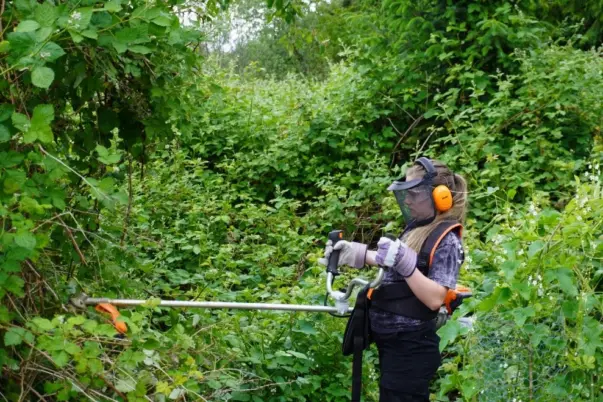Urban forestry grant benefitted The Flett
FOR IMMEDIATE RELEASE
Urban forestry grant helped Clover Park Technical College to expand educational outreach and advance habitat restoration goals
By Derek Faust
Using funding provided by the U.S. Department of Agriculture Forest Service Urban and Community Forestry Program, administered through the State of Washington Department of Natural Resources Urban and Community Forestry Program, Clover Park Technical College has spent the past year performing educational outreach and making improvements to its outdoor lab, the Natural Resources Laboratory and Research Park at Flett Creek. This outdoor lab/urban wildlife sanctuary located across the street from the Lakewood campus – aka The Flett – is flanked by busy roads, residential and commercial properties, and a cemetery. The projects funded by the grant focused on educational and outreach activities on The Flett to maximize the grant’s reach, impact, and visibility to the community.

Monthly habitat stewardship events saw college students and community volunteers training side-by-side in The Flett’s Garry oak and wetland riparian zone ecosystems. The habitat restoration sessions demonstrated appropriate techniques for the removal of invasive plant species such as Scotch broom, Himalayan blackberry, English ivy, English holly, and tansy ragwort. Participants remediated areas by planting native trees, shrubs, grasses, and wildflowers.
Clover Park partnered with Project WET and Project Learning Tree to host workshops providing environmental and outdoor education curriculum resources to K-12 environmental educators. Educators performed hands-on experiments with aquatic ecosystems and trees and joined walking tours of The Flett. Walking tours consisted of one to nine participants who examined the Garry oak, conifer, wetland ecosystems, and associated wildlife.
Urban forest habitat restoration activities of this project built upon the training provided in the educational activities. Restoration was performed primarily in the Garry oak savannah and wetland riparian ecosystems. As with other restoration activities, planting and seeding native species followed the removal of invasive plants. In the Garry oak savannah, volunteers removed over 2,500 sqft of Scotch broom and Himalayan blackberries, planted 5 Garry oak trees, and spread native seed mixes throughout in the area. In the riparian zone of The Flett, volunteers removed another 2,500 sqft of Himalayan blackberry and planted 40 trees and 6 shrubs representing 14 native species.

Bringing the project full circle, student interns applied the knowledge gained in coursework in CPTC’s Environmental Sciences and Technology program during internships on The Flett’s outdoor lab. Internship activities included cleaning up trash, removing invasive plant species, sampling and analyzing water quality, surveying fish and turtle populations, installing bat houses, and aiding in the design of the interpretive signs. These four new interpretive signs – 1) History, 2) Garry Oak Savannah, 3) Conifer Forest, 4) Flett Wetland – on The Flett encourage visitors to learn about and contemplate the ecosystems.
Clover Park Technical College will proudly point to the positive impacts of this project, which was supported with grant funds from the U.S. Forest Service, for years to come. From the students’ learning and the educators’ teaching, to the community members’ participation and the preservation of native trees in the restored areas, the Garry oak savannah and Flett Wetland ecosystems face a more sustainable future thanks to this funding.